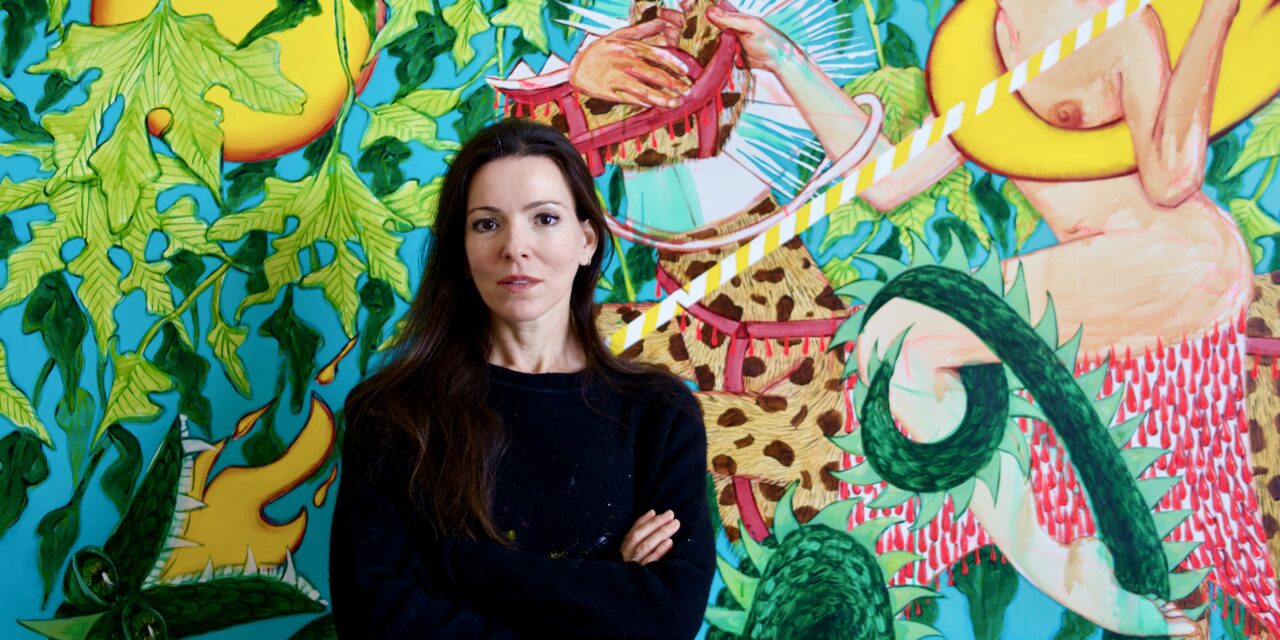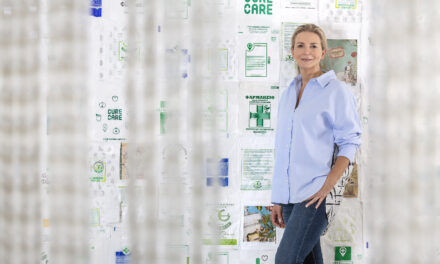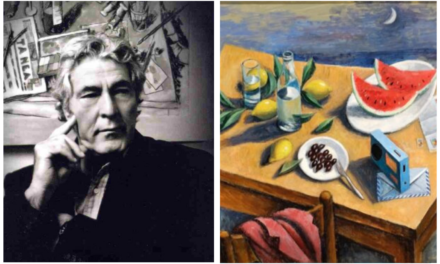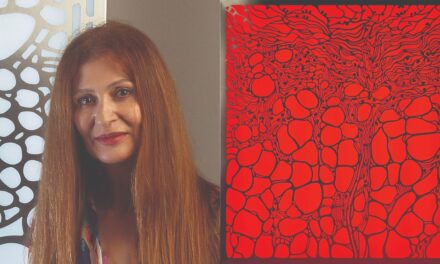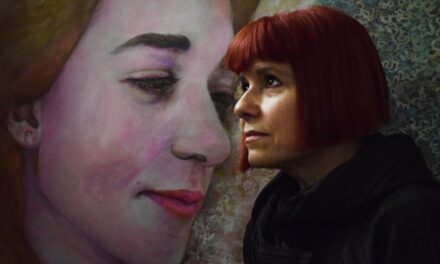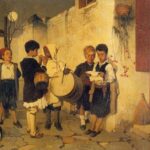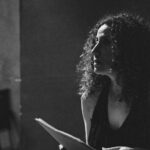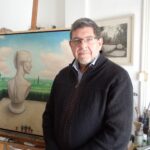Visual artist Stella Kapezanou’s work reveals glimpses of a dreamlike realm. Her compositions are shaped by her unique artistic vocabulary: bold, intuitive, intimate, fluid. They radiate with color and light, reflecting tension, tenderness, and beauty. Her current exhibition Emerald Paintings at Skoufa Gallery, invites the audience to engage with the energy, rhythm and emotional depth of her art.
Her work is characterized by dynamic brushworks and a vibrant palette, where figures emerge with a raw, expressive energy. Their exaggerated features reinforce their emotional weight while emerald hues suggest an idealized life—dazzling, yet “radioactively flat.” Her figures, sensual and detached, are painted “in vitro” charged with tension, mystery and melancholy.
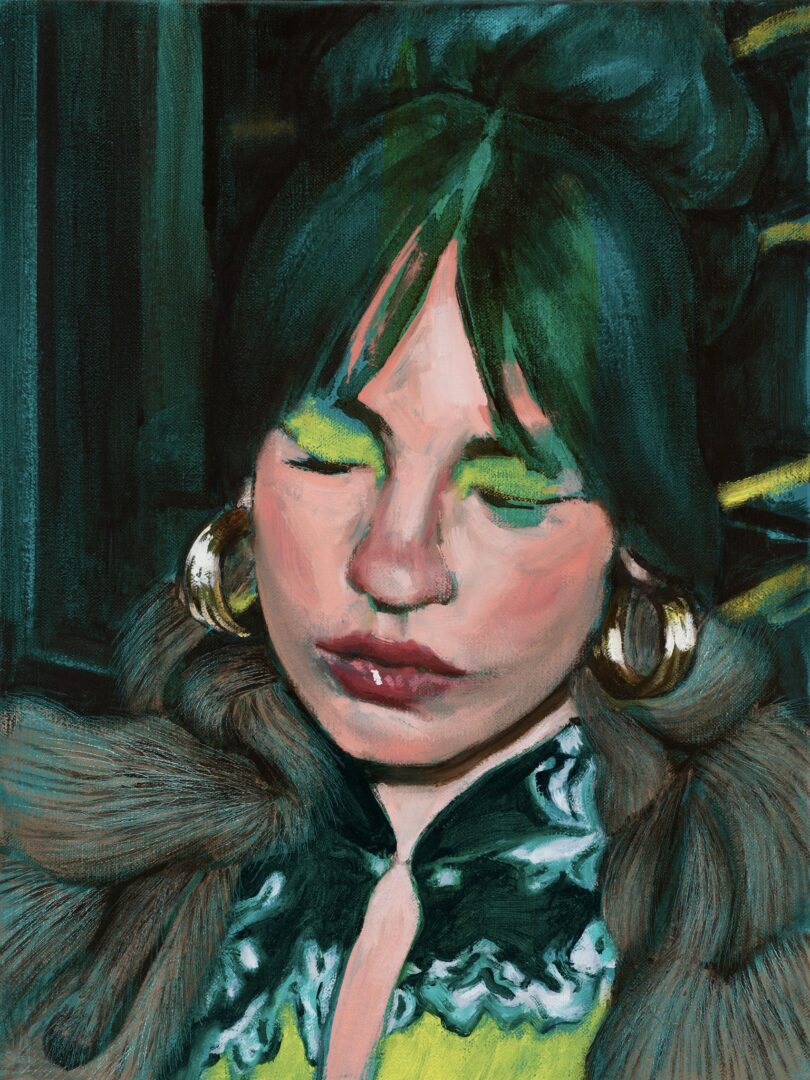
Stella Kapezanou is based in Athens. Her work explores themes of identity, gender, and cultural narrative through large-scale paintings and ceramic sculptures. She worked in fashion and media for 12 years. She studied at the Athens School of Fine Arts and Chelsea College of Arts in London, receiving dual scholarships. In 2024, she was awarded a Fulbright Fellowship to participate in the thematic residency at the Santa Fe Art Institute (USA), and was commissioned to design the new visual identity for the 65th Thessaloniki International Film Festival. She has received multiple awards for her practice. Her work has been presented in solo and group exhibitions across Europe, the UK, and the United States.
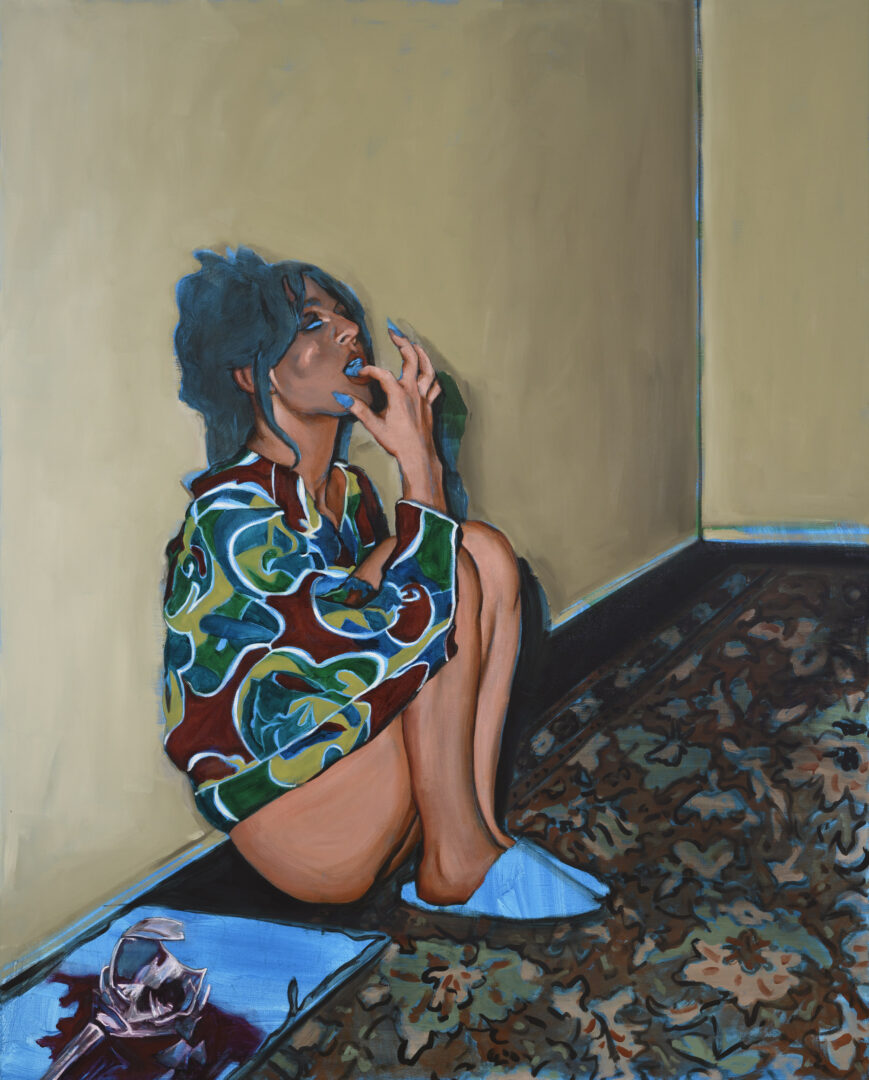
Stella Kapezanou shares valuable insights into her technique and influences with Greek News Agenda*.
Your artistic practice is rooted in a profound exploration of the intersection between fantasy and reality. Where do you draw your themes from and what are your influences?
My subject matter is born out of images that haunt me; personal memories, collective ghosts, fragments of desire. I never start from a complete narrative. Usually, it all begins with a fragment, an image I have obsessively stored up, an idea that could never have actually happened, a mood I can’t get rid of. I take it from there, as if I’m directing a myth that’s almost forgotten.
I’m drawn to symbols that carry emotional tension; a strange, almost living tapestry, landscapes of shapes and colors under the influence of LSD, clasped hands, exotic animals lying on couches. They are never just decorative elements; they are codes. I avoid clarifying the narrative. I want the painting to remain open to interpretations; simmering, seductive, a little unreadable. Something you can’t quite explain, but you can’t forget either.
My influences are hybrid: Manet, Lars Von Trier, fashion, pop culture, post-feminist deconstruction of the image. I am interested in the tension between the personal and the cultural, between the imaginary and the constructed.
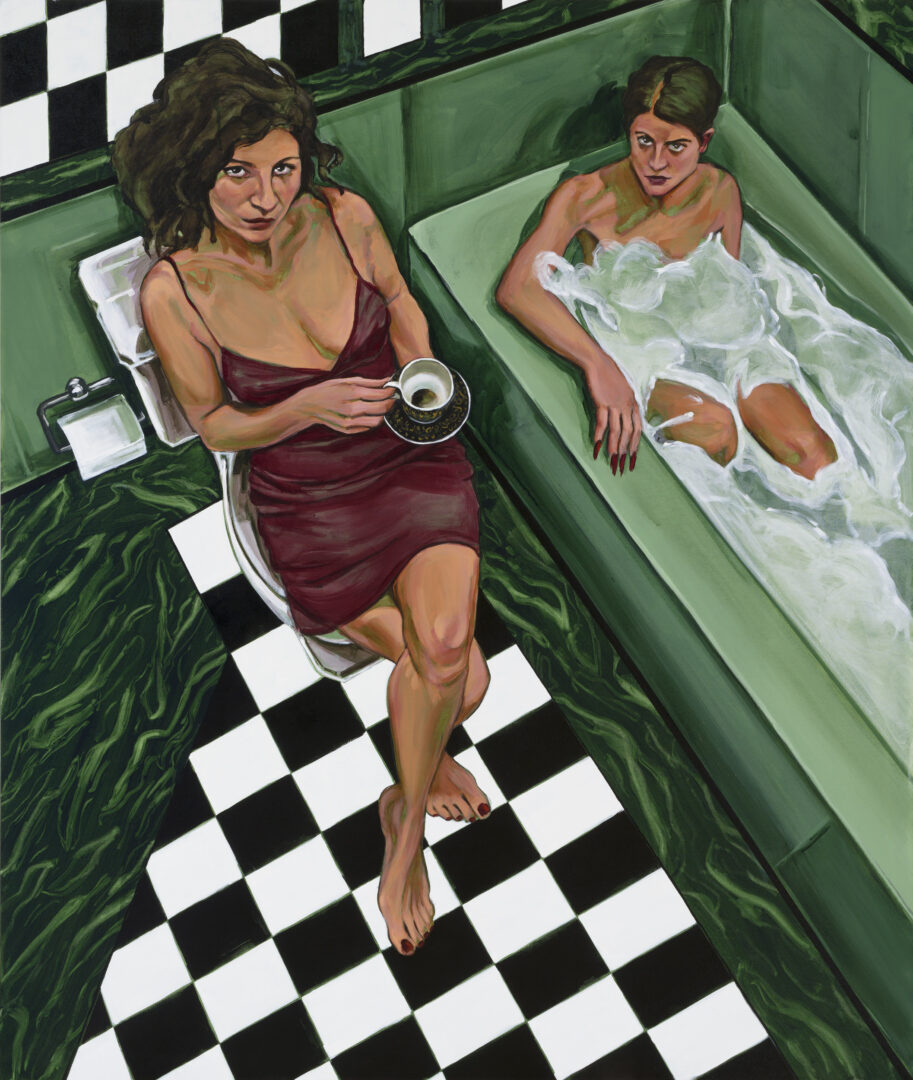
Your paintings evoke “tableaux vivants” combining painting, directing and photography. What is achieved in this way?
The tableau vivant functions as a tool of destabilization, not narrative. I use staging as an orchestration. I want the work to seduce, to whisper familiar things, through the light, the composition, the luxury of the surface. But there’s always a glitch. Something that doesn’t allow you to relax. What interests me the most is the point where the viewer feels uncertain, not knowing whether to trust what they are seeing.
I’m deeply fascinated by the concept of aesthetic manipulation, what happens when painting flirts with you like a filter on Instagram. But instead of reassuring you, it becomes a source of ambiguity. I often think of my protagonists as posing in front of an invisible camera, but the moment being recorded is private, emotionally charged, perhaps dangerous. It’s like scrolling and stumbling upon something you weren’t supposed to see – yet, it’s there, exposed.
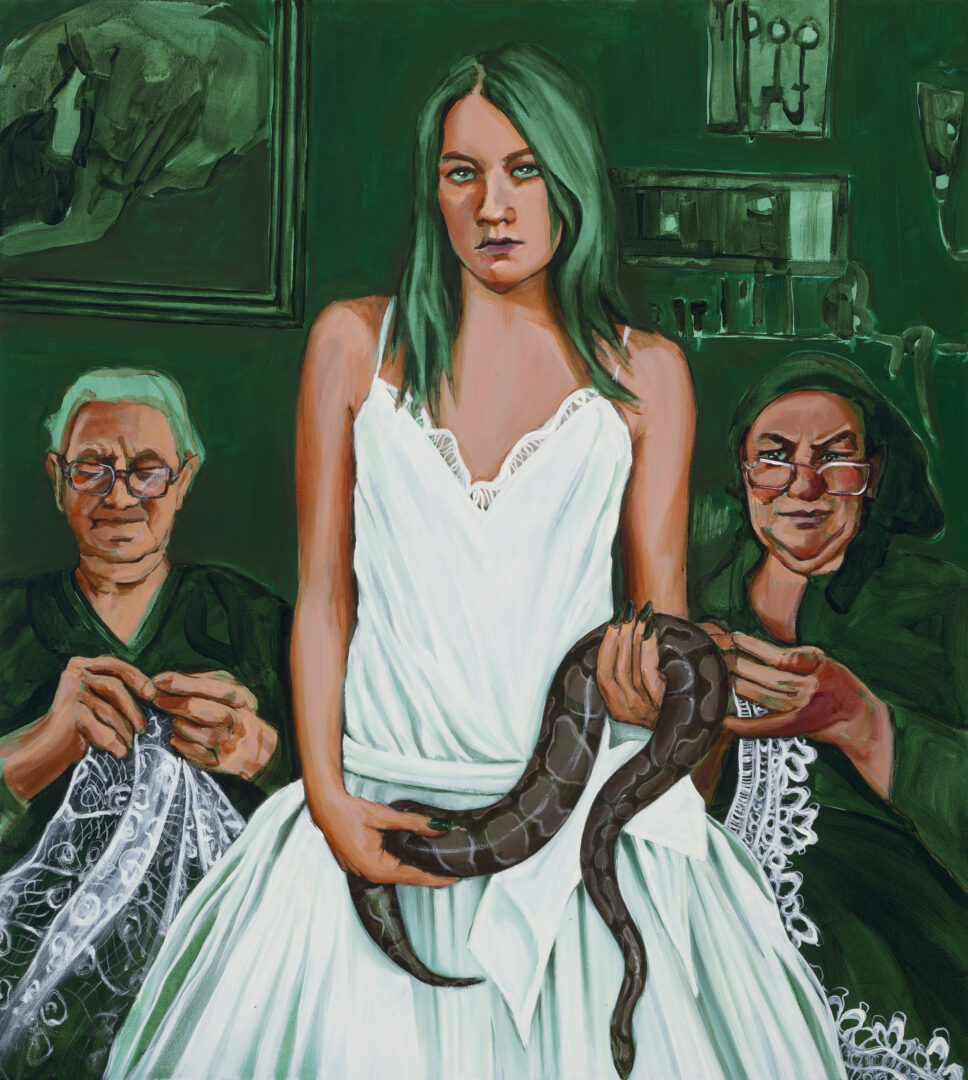
Your female protagonists are bold and seductive. The male presence, however, is rather incidental. What does this choice signify?
The male figure had a leading role in my previous work. In the current one, however, it appears only in a supporting role, in relation to a female presence, solely to reinforce her role. I create a field where the female body is in total control. My female protagonists are both objects and subjects, perpetrators and victims. Their femininity is fluid, dark, and ambiguous, with power that comes precisely from its inner contradiction. The absence of man creates space for these erratic versions of identity and desire.
Ηow about the symbols that are often seen in your works?
The symbols speak directly to the subconscious. They do not function allegorically or morally. Snakes, black cats, crows, corn, octopuses, stilettos, fires invite the viewer to let go of sensation, leaving – even if only for a moment – logic aside. I don’t want to lead the viewer to safe interpretations. The symbols act like cracks in the image – they pull you in, but never reveal why.
Your paintings allude to a timeless “elsewhere”. What is this “elsewhere” for you?
The “elsewhere” for me is a psychological construction. A realm where the rules of reality, of time, of gender are dissolved. It’s not a place, it’s an atmosphere. A field where desire can slip out of conventions to exist without the need to be explained. I see it as a field of dream domination, where the body, the gaze, the image are released from any narrative imposed on them. It is an “elsewhere” where everything is fluid, unstable, dangerous and therefore real.
What’s coming up next?
Dragons. I am preparing a solo exhibition at the Athens Municipal Gallery. It is a space that can accommodate the scale of my works, physically and emotionally. It will be a wild exhibition. Dragons, crows, black cats, snakes, tigers… and my women, of course. This work speaks of raw power. Myth, instinct, dominance, desire. It’s an exhibition about rebirth from the ashes. There’s humor, but it bites. Imagine a spellbook in a seductive nightmare. It’s not a quiet exhibition, it roars.
*Interview by Dora Trogadi

